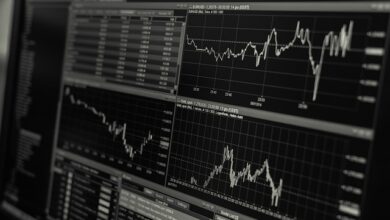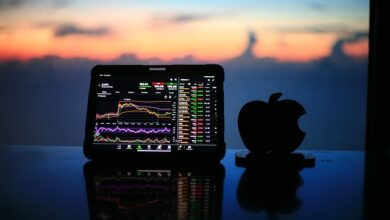The Profit Potential of Cryptocurrency Futures Trading: A Deep Dive into Digital Market Opportunities

Introduction: The Rising Tide of Crypto Futures
Cryptocurrency futures trading has become one of the most exciting and potentially lucrative trends in digital finance. Unlike traditional spot trading, where investors simply buy and sell cryptocurrencies at market prices, futures trading allows traders to speculate on the future price movement of digital assets—either going long (betting the price will rise) or short (betting it will fall).
This approach opens the door to massive earning potential, but it also introduces a higher level of risk and market complexity. As blockchain adoption and institutional interest grow, crypto futures are evolving into a key segment of the broader digital economy.
What Are Cryptocurrency Futures?
At its core, a crypto futures contract is an agreement between two parties to buy or sell a specific cryptocurrency at a predetermined price and date in the future. These contracts don’t require actual ownership of the underlying crypto. Instead, traders profit from price differences between the entry and exit points.
Popular futures trading platforms like Binance Futures, Bybit, and CME Group have made it easier for both retail and institutional investors to participate. These platforms provide leverage options—often up to 100x or more—allowing traders to control large positions with relatively small capital.
Example:
If Bitcoin (BTC) is trading at $60,000 and a trader believes it will rise to $65,000, they can open a long futures position. If the price indeed goes up, the trader profits from the difference. Conversely, if the price drops to $55,000, they incur losses.
Why Traders Are Turning to Crypto Futures
- Leverage Opportunities: Traders can amplify their potential returns by borrowing capital. Even small market moves can yield significant profits (or losses).
- Hedging Against Risk: Futures allow investors to protect their portfolios. For example, if someone holds large Bitcoin holdings, they can short BTC futures to offset potential declines.
- 24/7 Market Access: Unlike traditional financial markets, crypto trading operates around the clock, offering flexibility for traders worldwide.
- Liquidity and Institutional Growth: Major exchanges like CME and Binance now report billions in daily futures volume, making it easier to enter and exit positions.
The Potential Earnings in Crypto Futures
1. Leverage and Return on Investment
Leverage can dramatically multiply profits. For example, with 10x leverage, a 5% move in Bitcoin’s price can yield a 50% gain on the trader’s capital. However, leverage also magnifies losses—meaning that risk management is critical. According to research from The Block and Glassnode, nearly 60% of new futures traders lose their initial capital within 90 days due to poor risk control.
2. Institutional Traders and Quantitative Models
Institutional players, including hedge funds and trading firms, are now using AI-driven algorithms and high-frequency strategies to profit from small price discrepancies between spot and futures markets. This professionalization of crypto futures suggests that long-term profit potential remains strong—but only for those who understand both technical indicators and market psychology.
Key Risks and Challenges
- Liquidation Risk: With high leverage, even a small market dip can wipe out an entire position.
- Volatility: Cryptocurrencies are among the most volatile assets in history, with daily swings exceeding 10%.
- Emotional Trading: Many beginners fail due to panic-selling or overconfidence after short-term wins.
- Regulatory Uncertainty: Futures markets are under increased scrutiny from global regulators, which could affect exchange operations or user access.
Strategies for Maximizing Profit Potential
- Use Moderate Leverage: Professionals typically stick to 2x–5x leverage for sustainable returns.
- Apply Stop-Loss and Take-Profit Tools: Set clear exit points to prevent emotional decision-making.
- Diversify Assets: Don’t rely solely on Bitcoin futures—consider Ethereum, Solana, or AI-linked altcoins.
- Follow the Funding Rates: Understand funding rates in perpetual contracts to optimize entry points.
- Learn Technical Analysis: Use RSI, MACD, Bollinger Bands, and Fibonacci levels to identify market trends.
Future Outlook: The Evolution of Crypto Futures
As blockchain adoption grows, futures markets are likely to become even more sophisticated. Analysts predict that crypto derivatives could surpass spot trading volumes by 2026. Moreover, tokenized futures products may emerge—allowing investors to trade tokenized representations of futures positions, creating more liquidity and transparency. Institutional adoption, driven by platforms like CME and Nasdaq, will continue to bridge the gap between traditional finance and decentralized markets.
Conclusion
Cryptocurrency futures trading represents a thrilling, high-stakes opportunity for modern investors. The potential to earn significant profits is real—but so is the risk. It’s not just about luck; it’s about mastering leverage, psychology, and market timing. If done strategically, futures trading can be a powerful tool for both speculation and portfolio hedging, especially in a world where digital assets are becoming mainstream financial instruments.
Final Advice
Before diving into crypto futures, take the time to:
- Learn market fundamentals and technical indicators.
- Start small and practice with demo accounts.
- Use proper risk management and diversification.
- Stay updated with regulations and exchange policies.
The future of digital trading is exciting—and while the potential is vast, discipline and education will remain your best investment.















